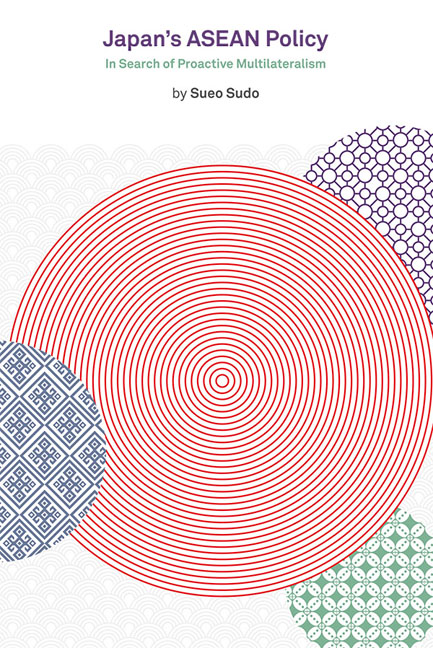Book contents
- Frontmatter
- Contents
- List of Figures and Tables
- Preface
- List of Abbreviations
- Introduction
- 1 ASEAN in Japanese Multilateral Foreign Policy
- 2 Embarking on Japan's ASEAN Policy: The Limitation of the Mainstream
- 3 Straightening the ASEAN-Indochina Divide: The Pursuit of the Alternative Stream
- 4 Consolidating an ASEAN-centred Policy: The Challenge of the Intermediate Stream
- 5 Fortifying a Japan-ASEAN Strategic Partnership: The Resurgence of the Mainstream
- 6 Towards a New Regionalism in East Asia
- 7 Conclusion
- Bibliography
- Index
- About the Author
6 - Towards a New Regionalism in East Asia
Published online by Cambridge University Press: 06 June 2017
- Frontmatter
- Contents
- List of Figures and Tables
- Preface
- List of Abbreviations
- Introduction
- 1 ASEAN in Japanese Multilateral Foreign Policy
- 2 Embarking on Japan's ASEAN Policy: The Limitation of the Mainstream
- 3 Straightening the ASEAN-Indochina Divide: The Pursuit of the Alternative Stream
- 4 Consolidating an ASEAN-centred Policy: The Challenge of the Intermediate Stream
- 5 Fortifying a Japan-ASEAN Strategic Partnership: The Resurgence of the Mainstream
- 6 Towards a New Regionalism in East Asia
- 7 Conclusion
- Bibliography
- Index
- About the Author
Summary
International relations in Southeast Asia in the twenty-first century began to reflect a new phase, most notably in 2003, when the Association of Southeast Asian Nations (ASEAN) embarked on community building. Furthermore, ASEAN's extra-regional efforts resulted in the establishment of the East Asia Summit (EAS) in 2005. It was ASEAN's political will that indeed continued to be the hub of East Asian cooperation. Most significantly, in August 2007, the heads of member states signed the historic ASEAN Charter. With the strong foundation established by the charter, ASEAN is expected to manage the key challenges of regional integration, globalization and economic growth.
After several years of political instability, Japan also entered a new phase in domestic politics in 2009. The ruling Liberal Democratic Party (LDP) was doomed by its intraparty problems, especially after the Koizumi administration. The LDP changed its chairman three times, thereby appointing three prime ministers, within a period of three years, suggesting the need for a fundamental change in Japanese politics. Most importantly, the Japanese voters became disillusioned by a series of ineffectual prime ministers. The September 2009 general elections saw the Democratic Party of Japan (DPJ) come to power, ending the long-term political monopoly of the LDP. Adopting an alternative strategy, Prime Minister Yukio Hatoyama advocated the creation of an East Asian Community based on the political philosophy of “fraternity”, although due to strained relations with the United States over military bases in Okinawa he was not able to pursue this for more than a year. Prime Minister Naoto Kan also announced Japan's new development strategy, which made East Asia one of the main target areas of foreign policy.
Thus, beginning in 2007, Japan-ASEAN relations have entered a new phase. The focus is on a new regionalism in East Asia where advanced countries and developing countries are required to act and work together to improve regional cooperation and integration. Whether a new ASEAN and a new Japan under the DPJ continue to serve as a hub of East Asian regionalism remains to be seen. In this last chapter, ASEAN's renowned quest for three-pillared community building and Japan's upgraded contributions to East Asian regionalism through sustainable Japan-ASEAN partnership will be explored.
- Type
- Chapter
- Information
- Japan's ASEAN PolicyIn Search of Proactive Multilateralism, pp. 199 - 234Publisher: ISEAS–Yusof Ishak InstitutePrint publication year: 2014



